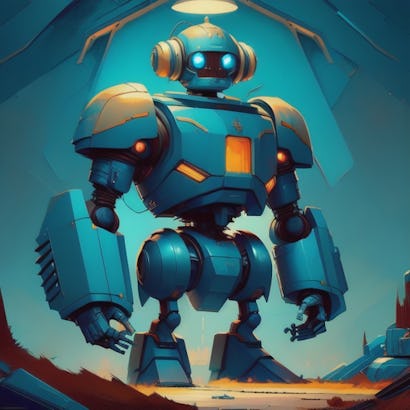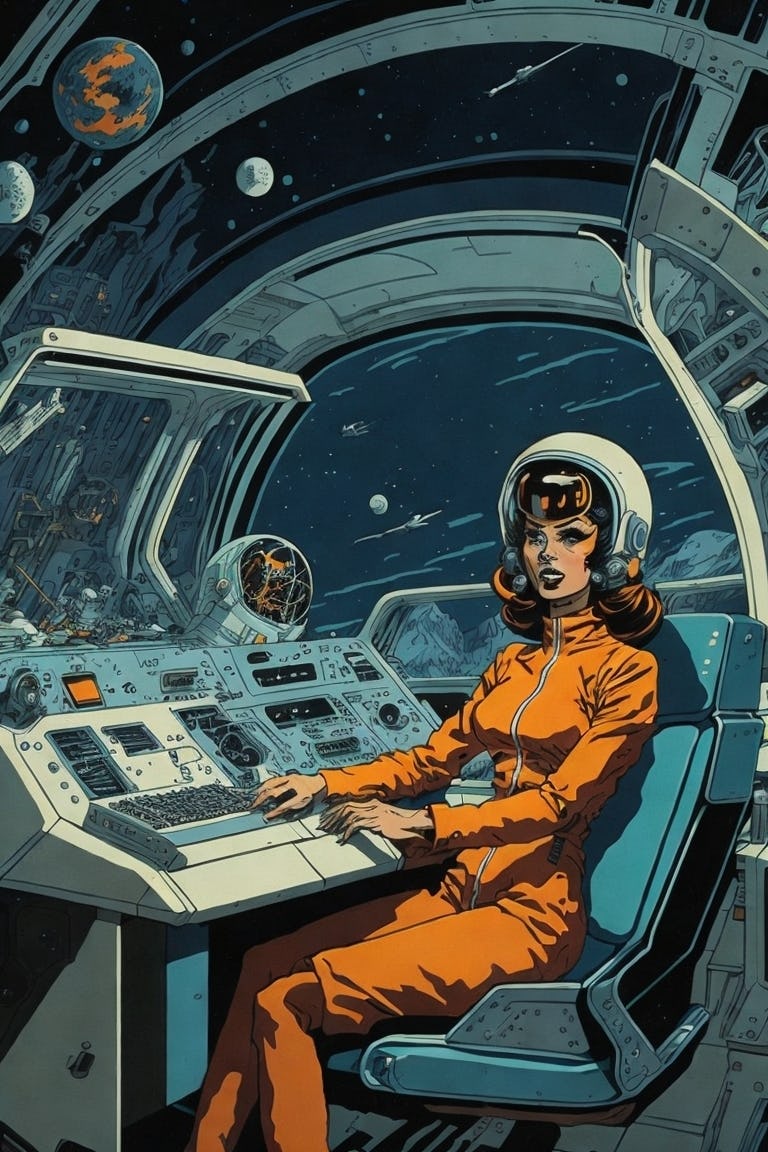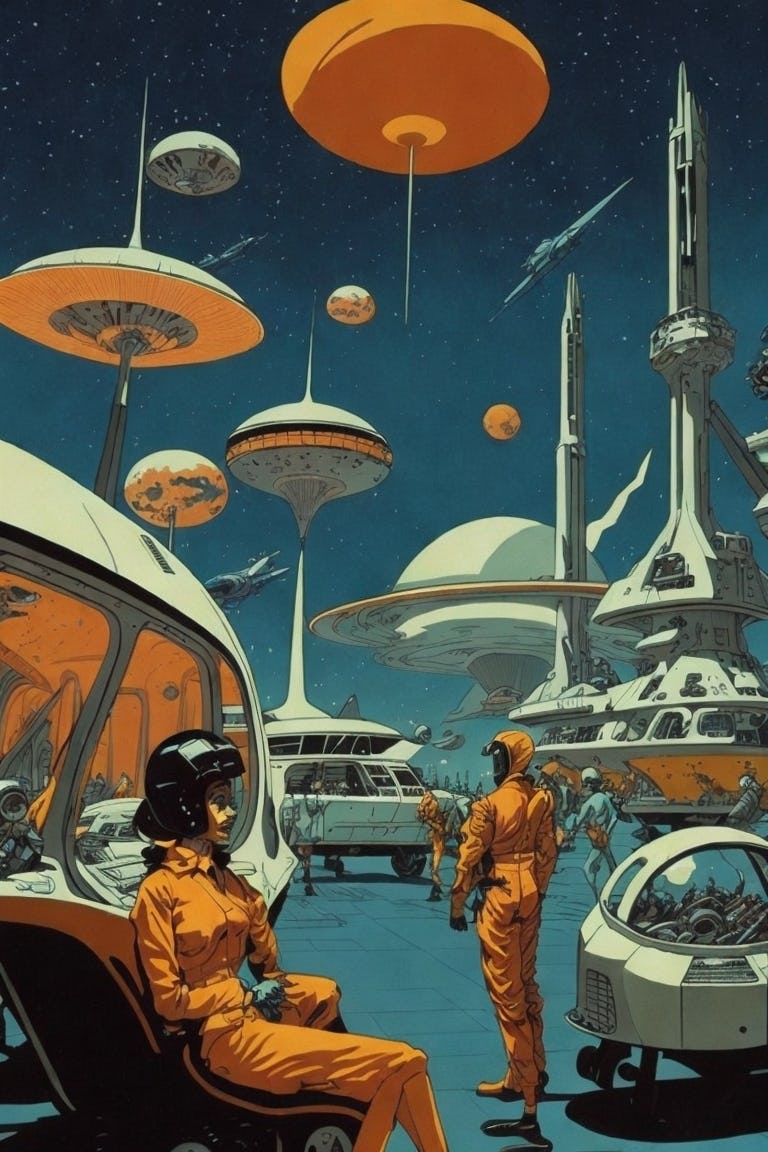
Behind the Scenes: Creating AI Generated Imagery for the Rocketmakers AI Guidebook with Leonardo.AI
Introduction
Artificial Intelligence (AI) is transforming the world as we know it. It is rapidly becoming an essential part of many businesses, industries, and our daily lives. But being relatively new and shiny, it can be hard to know where to start with implementing it into your business. For this reason, Rocketmakers has developed an in-depth AI Guidebook covering all aspects of AI, including its pros and cons, and how to utilise it in your business, rather than avoiding it and becoming behind the curve.
This blog post will discuss how the imagery used in the Guidebook was created using AI tools, the challenges faced, and the solutions used to overcome them.
Why did I Choose to Use AI Generated Images for the Guidebook?
As the Guidebook's primary focus is centred around AI integration in businesses, using imagery that reflects Rocketmakers' approach to implementing AI is a fitting choice for the Guidebook. It not only brings the power of AI to life but also helps readers visualise how it can be integrated into their businesses.
How to Choose the Most Appropriate AI Tools for the Task
When it comes to using AI as an image generation tool, there are many different options available in the market. However, these options can often feel overwhelming, especially if you're new to this technology. The sheer number of choices can make it challenging to decide which one would be best for you.
While some AI tools are free to use, they may produce low-quality images that might not meet your standards. On the other hand, some high-quality image-generating AI tools are locked behind paywalls. When selecting an AI tool for image generation, you should consider factors such as quality, cost, ease of use, and compatibility with your existing tools and workflows. Therefore, it is important to do your research and choose the AI tool that best fits your criteria.
We utilised a tool called Leonardo.AI for generating our images. Leonardo.AI is an AI-powered tool that creates visual assets, such as concept art, photography, game assets, character designs, and more. It offers powerful customisation options, including pre-existing choices to select from, as well as the ability to add your own prompts that includes a section for aspects you do not want in the images called ‘add negative prompt’. For instance, if you wanted to create an image of a group of dogs and did not want a certain breed included, you could add a negative prompt that states, "Do not include 'Labradors'."
How Did I Generate the Images?
The prompts I gave Leonardo.AI to create the imagery used in the Guidebook and the primary prompt used in every image was, ‘60s comic retro future’ then whatever else I wanted included in the images such as a spaceship or a group of crew mates. Considering Rocketmakers brand is very focused on Rockets and Space, this felt like a good jumping off point.
After testing a few images and not achieving the desired look and feel, I decided to experiment further with the prompts. I tried out multiple style presets from the two drop downs located beneath the main prompt. These drop downs were labelled 'fine tuned model' and an unnamed one which I refer to as the 'style'. I selected Leonardo Diffusion and Dynamic from the two options respectively. Although I did not achieve immediate success, I eventually found a style that was closer to what I was looking for, but still not quite there. I then enabled a new feature called Leonardo Alchemy (beta), which transformed my image creation into exactly the style I had envisioned. Leonardo Alchemy (beta) is a brand-new bespoke 2D image pipeline that generates incredibly high-fidelity images and is coherent with all existing platform models. This was definitely a game-changer.
The Challenges I Faced
Despite the success of creating images that fit the Rocketmakers theme perfectly, there were still a few areas that were unavoidable obstacles. These issues include general limitations AI image generation faces, with one of the biggest challenges being the availability of training data. The quality of generated images depends heavily on the quality and quantity of a pre existing database of high quality images, which can be a time-consuming and expensive process. Other issues were found in areas such as faces, hands and bodies sometimes rendering abnormally, the composition of the scene feeling awkward, unsuccessful prompts and limited control over the colours produced.
One particular area of interest was the control of image colours. While using Leonardo.AI, I attempted to implement the Rocketmakers brand colours into the images produced but was unsuccessful in matching the colours perfectly. The closest I could get to our brand colours was by using prompts such as "orange," "teal," and "blue," which were close enough to work with. From there, I made further colour corrections myself.
These frustrations are the reality of AI image generation in its current state. While some of the art created from it is incredible, it’s still in its infancy and has a long way to go.



What Were the Solutions to the Challenges I Faced?
Fortunately, there are other tools available to us to address these issues. Topaz Labs Gigapixel was used to upscale all the images in our Guidebook to make them print-ready and take any noise out of them. Adobe Photoshop was also a vital tool for colour correction. I imported all of the AI-generated images into Adobe Photoshop and manually adjusted the colours of each to match our branding.
Even with these tools at our disposal and the ability to make further corrections, we made the stylistic choice to keep some of the mishaps in our Guidebook imagery. We believe in transparency and did not want to mislead our readers into thinking that we created all of these images through more traditional methods. Additionally, the quirks that come with producing AI images are both fun and visually interesting. While readers may not pay too much attention to the imagery on a first pass through our Guidebook, they may take a closer look after reaching the credits page and noticing that all of the images were produced using AI. This approach shows the imperfections of AI-generated images and highlights the extent to which AI image generation still needs to improve to become indistinguishable from human-made art.
Conclusion
Despite the incredible advancements made by artificial intelligence, it still requires a skilled individual to come in and fix some things when it comes to image generation. While AI has the potential to be a massive time, effort and money saver, it isn't quite at the point where no human aspect is required. However, with the integration of AI, there is an opportunity to streamline processes and reduce the workload on humans. This can lead to more efficient and effective outcomes, while freeing up time and resources for other important tasks. Furthermore, as AI technology continues to evolve, there is potential for even greater benefits and advancements in various industries. As such, it's necessary to provide a human touch to ensure that everything runs smoothly and to oversee the integration of AI. In the long run, this can lead to increased productivity and success within our businesses.
.jpg?ixlib=gatsbyFP&auto=compress%2Cformat&fit=max&q=50&w=70&h=70)